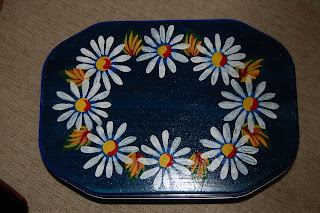 |
| Knypersley Reservoir |
I've often taken time out from gardening to enjoy walking in the glorious countryside of North Staffs, South Cheshire and the Peak District. We're fortunate to have several lovely country parks with lakes - some natural, some reservoirs, some reclaimed - fairly close to our home, including Astbury Mere, Knypersley Reservoir (Greenway Country Park), Bathpool Park and Westport Lake.
 |
| Bluebells, Greenway Country Park |
Westport Lake is the only one of these within the boundaries of the City of Stoke-on-Trent and is the second closest to home, as well as being the most accessible in all weathers. It has the added advantage of being on one of our regular canal routes, the Trent and Mersey to (or from) Stoke-on-Trent, so is sometimes a first or last stop on a journey.
 |
| Winter walk around Westport Lake |
Considering that it is reclaimed industrial land rather than a natural landscape, the wildlife to be seen on and around it is remarkable, especially in winter when the lake hosts a wide variety of migrating wildfowl, and it was the first place I had the privilege of glimpsing the courtship display of Great Crested Grebes and the only place I have ever been close enough to a wren to snatch a photo.
 |
| Great Crested Grebes at Westport Lake |
Great Crested Grebes can also be seen at Central Forest Park, another reclaimed wildlife haven with a lovely lake and terrific play area, skate park and family facilities. If Stoke-on-Trent kids are fortunate enough to have parents or grandparents able to take them to the parks, there is some impressive kit for them to enjoy: I quite envy them!
 |
| Central Forest Park |
In the last few weeks, we've started exploring the City's traditional urban parks, Victorian-era creations from land donated to the huddled masses by philanthropic industrialists or aristocrats. I wish I had visited them years ago, when there was more investment in public horticulture. Stoke-on-Trent City Council's professional gardeners won Gold and Best in Show at a series of RHS Tatton Park Shows in the years after we moved up.
 |
| 2010 Stoke-on-Trent Council entry for RHS Tatton Park |
Austerity has seen the end of both the competition - although, ironically, money was found to pay contractors from outside the city to build a Chelsea show garden a few years back - and many paid posts. While I have some sympathy with the trend towards more sustainable and naturalist perennial planting and away from bedding plants in serried rows, there is still something quite magnificent about a bright display of under-planted tulips, locally best done in Queens Garden's, Newcastle-under Lyme.
Despite that, our visits to Tunstall Park and Longton Park have been thoroughly enjoyable. Both are beautifully laid out and combine planted areas with elegant lakes and generous areas of playing fields and bowling greens, and more excellent play parks. They seem to be well-used and appreciated by their local communities too.
 |
| Tunstall Park |
In Tunstall Park we walked under an arch of cherry blossom and watched newly-hatch coot chicks venturing out of their nest for the first time, under the care of attentive parents.
In Longton Park, the semi-tame squirrels seemed more than a little put out that we had nothing to feed them, standing indignant as we walked by, and I was thrilled as only a green technology geek can be when I realised the fountain in the lower lake was solar powered!
 |
| Longton Park |
Both parks deserve visiting again when the summer borders are in flower, so all credit to the staff and volunteers who manage and maintain them. Burslem Park and Hanley Park - where a lot of restoration work is under way after a successful Heritage Lottery Bid - are next on the list.





















































